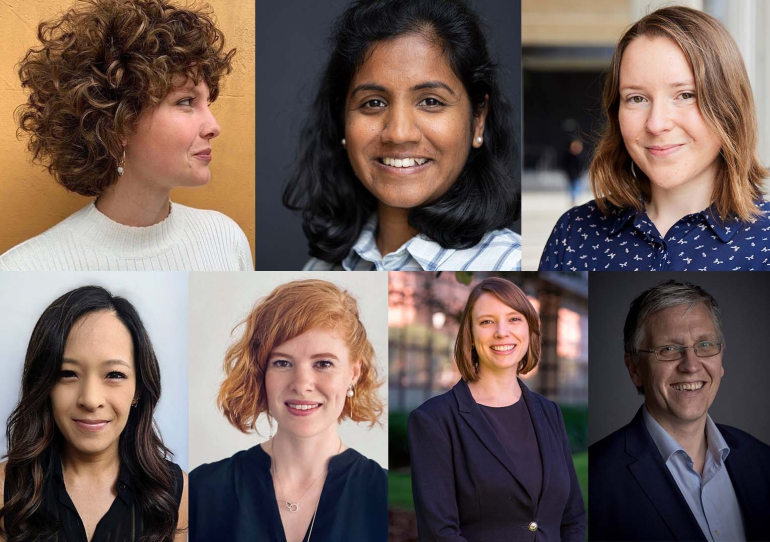Caitlin Creak
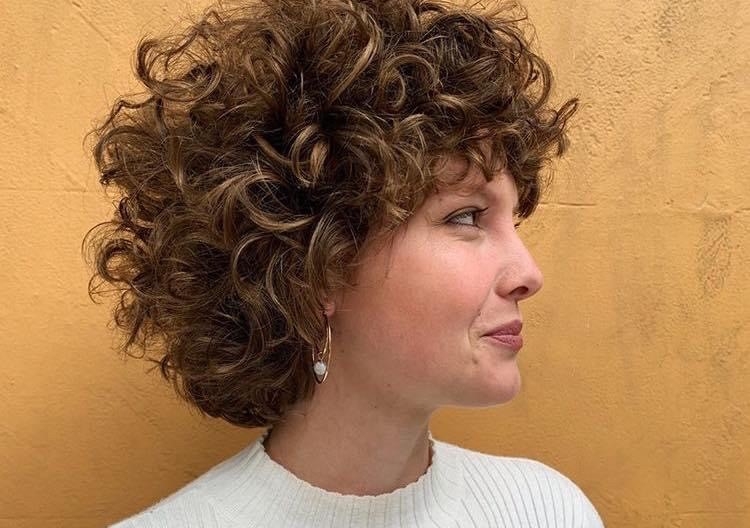
Asked what drew her to spiders, Caitlin gives her ‘honest fan girl answer’. “I watched a spider clean itself once (which is very similar to how a cat cleans itself), and instantly fell in love." Photo: Caitlin Creak/Mousey Browne.
Caitlin Creak is a PhD Candidate who studies behaviour and ecology, currently tracking – of all things – male Sydney funnel web spiders.
“And oh my god do I love it? I am in the middle of field season, searching for the coolest spider in New South Wales, and tracking their movements while they look for girlfriends,” she says.
Asked what drew her to spiders, Caitlin gives her ‘honest fan girl answer’. “I watched a spider clean itself once (which is very similar to how a cat cleans itself), and instantly fell in love. I think they’re super cute, but their diversity? Their huge repertoire of behaviours? The role they play in our ecosystems? Don’t even get me started.”
Caitlin’s aptitude for science, she says, comes from her mother and how she was raised. “My mother encouraged us to be curious, to follow our dreams. We also grew up surrounded by native Australian bush and encountered all of the wonderful creatures that come with it. There is a certain streak of stubbornness and aptitude for creativity that I really do think I inherited from my mother…”
Caitlin’s other influences include fellow PhD Candidate Anastasia Shavrova (“This is a woman destined for academic greatness”), urban spider ecologist Dr Lizzy Lowe who demonstrated for Caitlin other women doing “a great deal of good via science communication”, Caitlin’s partner James – partnered since undergraduate biology – but finally, Caitlin emphasises her mum once more. “My Mum (Sally), although not a scientist, I have watched successfully build her own career, all the while raising three children. I struggle with my confidence, but my mum is, and was, always there encouraging me while I studied, cried, and – finally – celebrated getting into a PhD program”.
Charuni Pathmeswaran
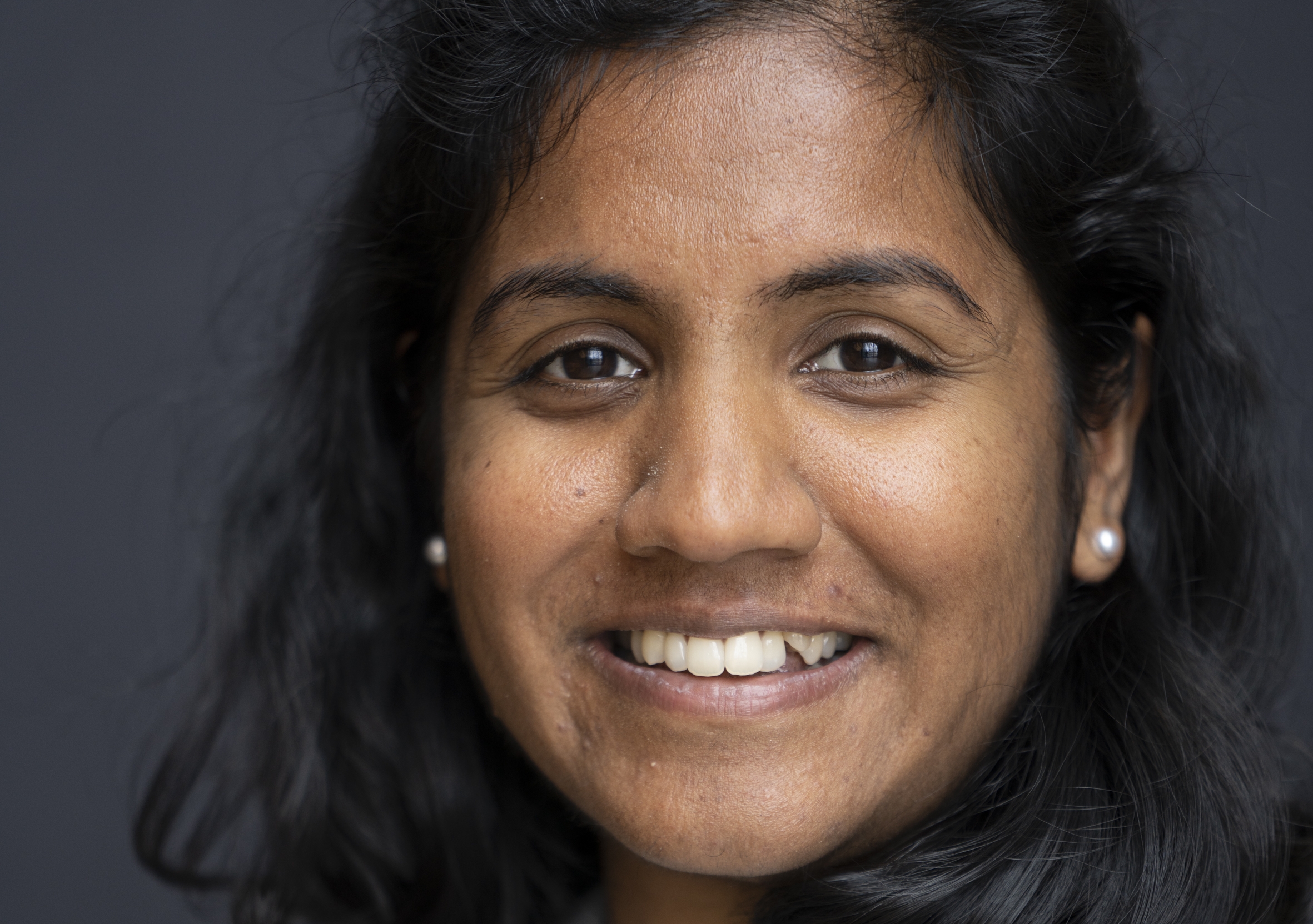
“Climate change wasn't a very big topic back in Sri Lanka at the time, but I knew it was a global issue. I was interested in learning about climate extremes – extreme events that are supposed to be rare..." Photo: Mark Rogers/CMSI.
Charuni Pathmeswaran is a PhD candidate in the Climate Change Research Centre who studies Australia’s coastal belt to understand whether terrestrial heatwaves can be linked to those in the adjacent ocean. "That’s my research in a nutshell really,” she says.
Always interested in the environment, Charuni grew up in Sri Lanka where she did her bachelor’s degree, though it was only after moving to the UK for her masters that climate change became a viable research option. “Climate change wasn't a very big topic back in Sri Lanka at the time, but I knew it was a global issue. I was interested in learning about climate extremes – extreme events that are supposed to be rare but, now in a warming world, are becoming more frequent.”
Despite climate change not being ‘a big thing’ in Sri Lanka, it was Charuni’s undergrad supervisor and sole climate researcher at the University of Colombo, Professor Erandathie Lokupitiya, who encouraged Charuni to pursue her interest in climate change, to “study the impact of extreme weather events on coconut productivity in Sri Lanka”. (More research in a nutshell.)
About Charuni’s instilled values, she says “My parents are very environmentally conscious. They never studied environmental science as a degree – yet here they were [in my childhood], practicing sustainability in their own way”. Charuni’s paternal grandmother, too, is ‘one of the most sustainable people’ she’s ever met. “Even to this day, when I call her, she’ll tell me of a simple way she’s found of reusing some box she got as a gift.”
That’s about sustainability, though. When it comes to Charuni’s passion for the climate “I think that's just something that came from within me”, she says. “That was my personal interest. I think it was just me reading the news, seeing what was happening in other countries and the media...”
Emma Harding
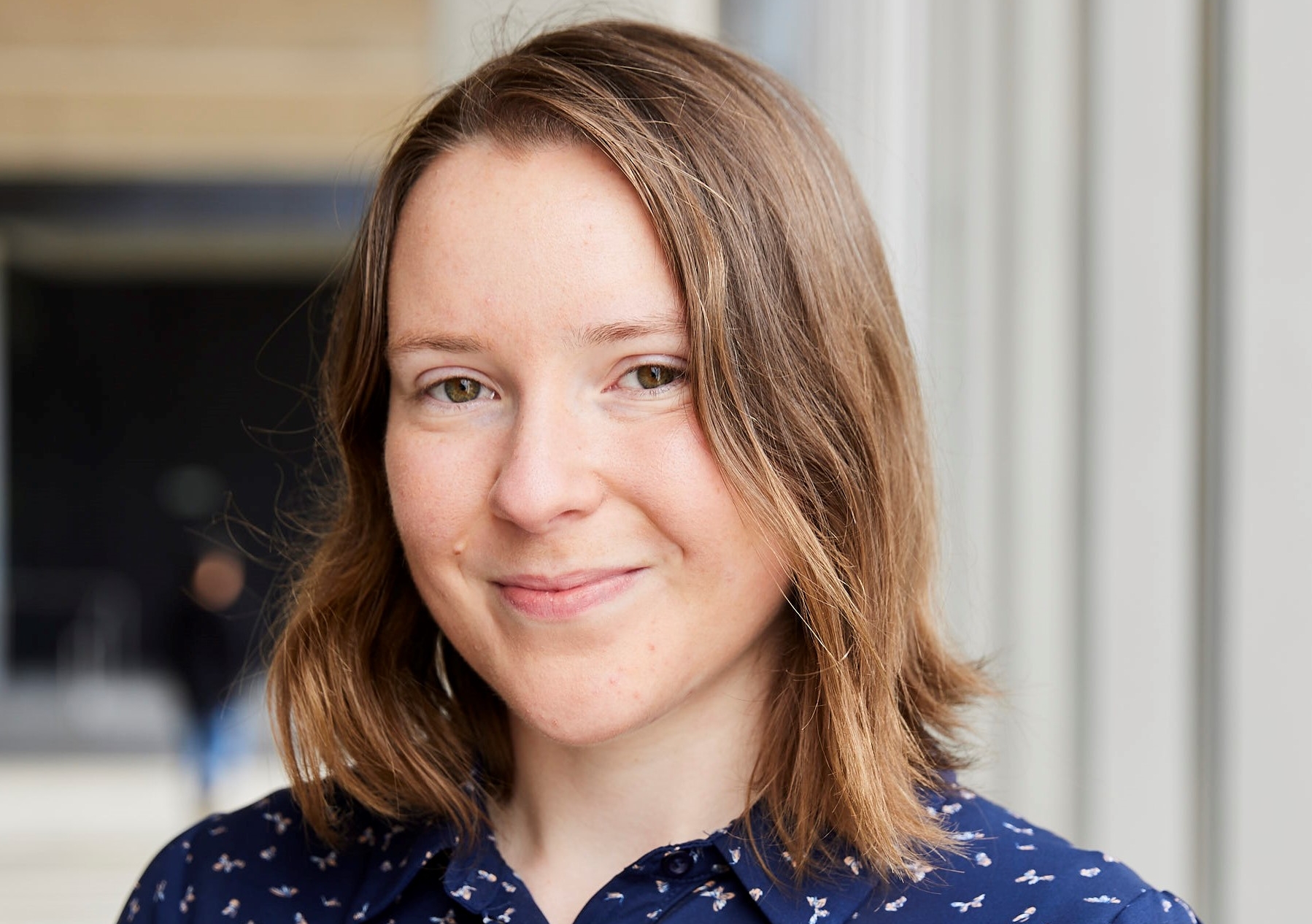
"Seeing that as a kid definitely sent me down the thought of I can be a doctor one day if I want to, and I can do stuff with dinosaurs…I’m still working on the second part”. Photo: Provided/UNSW Women in Maths & Science Champions Program.
Emma Harding is a virologist, “well…a PhD candidate studying virology. I'm in my third year, so getting to the pointy end”.
“I initially started my thesis on viral fossils; so you can study ancient viruses by looking at these fossils of their DNA” which – she clarifies – are molecular descendants of viruses (not mineralised bones!). "But over the last few years, every virologist has been roped into doing a lot of COVID work, which I've been a part of. But me in particular? I'm more interested in the evolution of viruses over time.”
Though Emma’s father showed her science fiction movies and novels growing up, Emma speculates her interest in science “is probably more nature than nurture”.
“I was interested in science before watching those things, since I can remember…like three, four years old.”
Having said that, there was a role model and namesake in Jurassic Park 2. “There's a character called Doctor Harding. That's my last name. And she's a woman. Seeing that as a kid definitely sent me down the thought of I can be a doctor one day if I want to, and I can do stuff with dinosaurs…I’m still working on the second part”.
Some of Emma’s many ‘awesome role models’ were her HSC biology and IT teachers, who Emma describes as being “so enthused about STEM that it was refreshing. Their knowledge and passion blew me away – they knew so much about so many topics – and that's definitely something I aspire to do”.
Participating in the UNSW Women in Maths & Science Champions Program, Emma connected with another role model and namesake: Professor Emma Johnston. “Seeing a female Dean was surprising (which it shouldn't be), but it was very inspiring. And following her on Twitter and seeing what she does… Emma Johnston might be the biggest role model I've had here”.
Jessica Lee
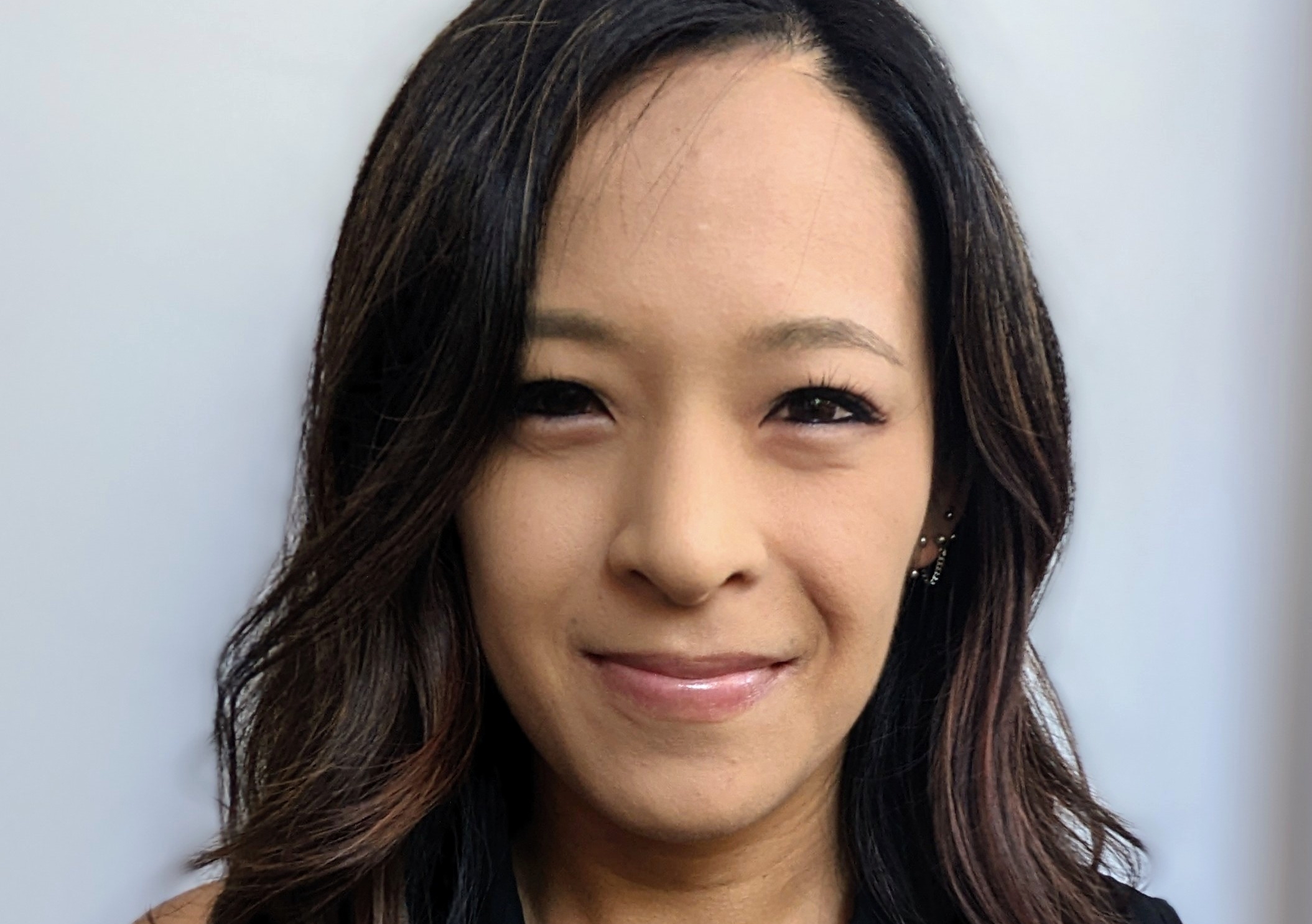
"[S]tanding up for each another, initiating difficult conversations, being generous with both time and knowledge… Just seeing my colleagues behave in this way gives me inspiration for who I want to be when I reach those levels.” Photo: Jessica Lee.
Jessica Lee is a postdoctoral research fellow in the School of Psychology who studies “how people learn and generalise from limited evidence” and how they then “integrate this evidence to make judgements and inferences about the unknown”.
“I guess I’ve always been interested in human behaviour,” Jessica says, “weird and wonderful as it is”.
Jessica’s biggest influence as a girl was her mother. “She was very smart, very academically-driven in school, however she grew up in Hong Kong and her family was very poor. She wasn’t allowed to complete high school.” Being afforded fewer opportunities and being perceived as less capable “didn’t seem to dampen [my mum’s] motivation or spirit in any way…”.
“She always encouraged my sister and me to make the most of the opportunities that were available to us academically. Women can do things just as well as men, and I guess just seeing her attitude has been quite inspiring.”
It was during studying for her Honours, after which Jessica planned on pursuing a career in clinical psych, that she ‘fell into’ her career. “I just happened to discover that I really liked research”. And some innate qualities just lent themselves. “I feel like I just need to know things; I’m very curious about a lot of things. I find nearly everything about people very interesting. I think all of those qualities really help in science”.
With no prefabricated plans for pursuing research, Jessica’s science inspirations came later in her colleagues, mentors, fellow students. “I think they’ve all rubbed off on me in some way – it's these little behaviours that make a difference: standing up for each another, initiating difficult conversations, being generous with both time and knowledge… Just seeing my colleagues behave in this way gives me inspiration for who I want to be when I reach those levels.”
Karina Hudson
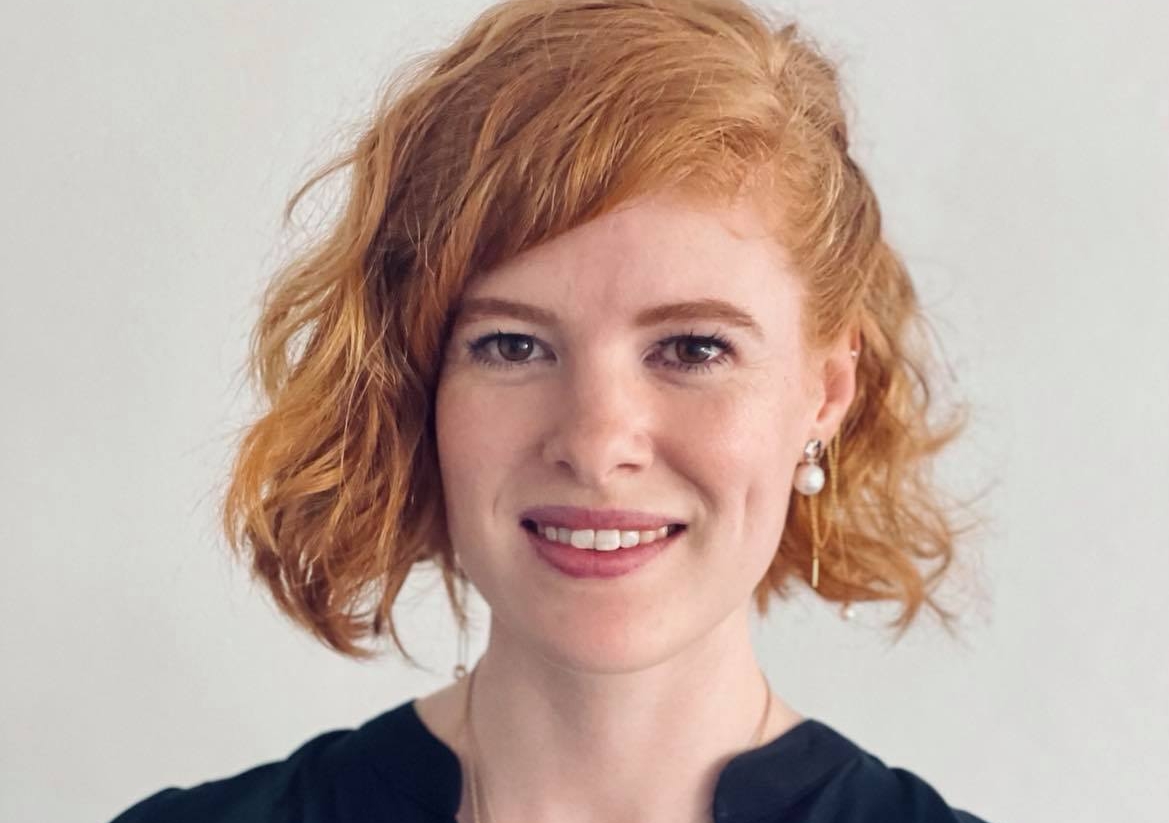
“I was the first person in my family to go to university,” she says. “I don’t come from a family of scientists, but my parents were encouraging, and I was lucky to have a great year 12 physics teacher (shout out to Dr Hux!)”. Photo: Karina Hudson.
Karina Hudson is a research fellow working in condensed matter physics – ‘the study of solids and liquids’ – which “for my work,” Karina says, “is the electronic properties of semiconductors to build better electronics and computers for future technology”.
At the moment Karina is working on quantum wires – “little channels of electrical current 1000 times smaller than human hair where electrons travel in single file, showing some unusual quantum behaviours”.
Finishing school, and not knowing what to do, Karina followed her interest in science to enrol in both physics and engineering as an undergraduate. “I was the first person in my family to go to university,” she says. “I don’t come from a family of scientists, but my parents were encouraging, and I was lucky to have a great year 12 physics teacher (shout out to Dr Hux!)”
Finding a knack for experimental physics during undergrad, Karina enrolled in honours, choosing a project for its ‘hands on lab work’ and by its end – with “unexpectedly exciting results from my measurements” – decided to stay on for a PhD with Prof Alex Hamilton, whom she still works with now (“Sorry, Alex: You can’t get rid of me.”).
“I sometimes think of quantum mechanics as being like brain yoga,” Karina says. “You’re learning to reason in a new language, developing new intuitions for the physical world, and building up that skillset to apply to real physical systems that behave weirdly, unintuitively. That’s really a lot of fun.”
Being a physicist isn’t the most conventional career path for anyone, although particularly so for women, so as well as enjoyment, Karina finds some comfort in female characters in fiction. Describing women in Star Trek and ABC’s Miss Fisher, Karina says “…seeing any woman who's taking their life off the beaten track – and doing so entirely on her own terms, being unapologetically feminine – that’s the sort of thing I respect”.
Kathryn Baker
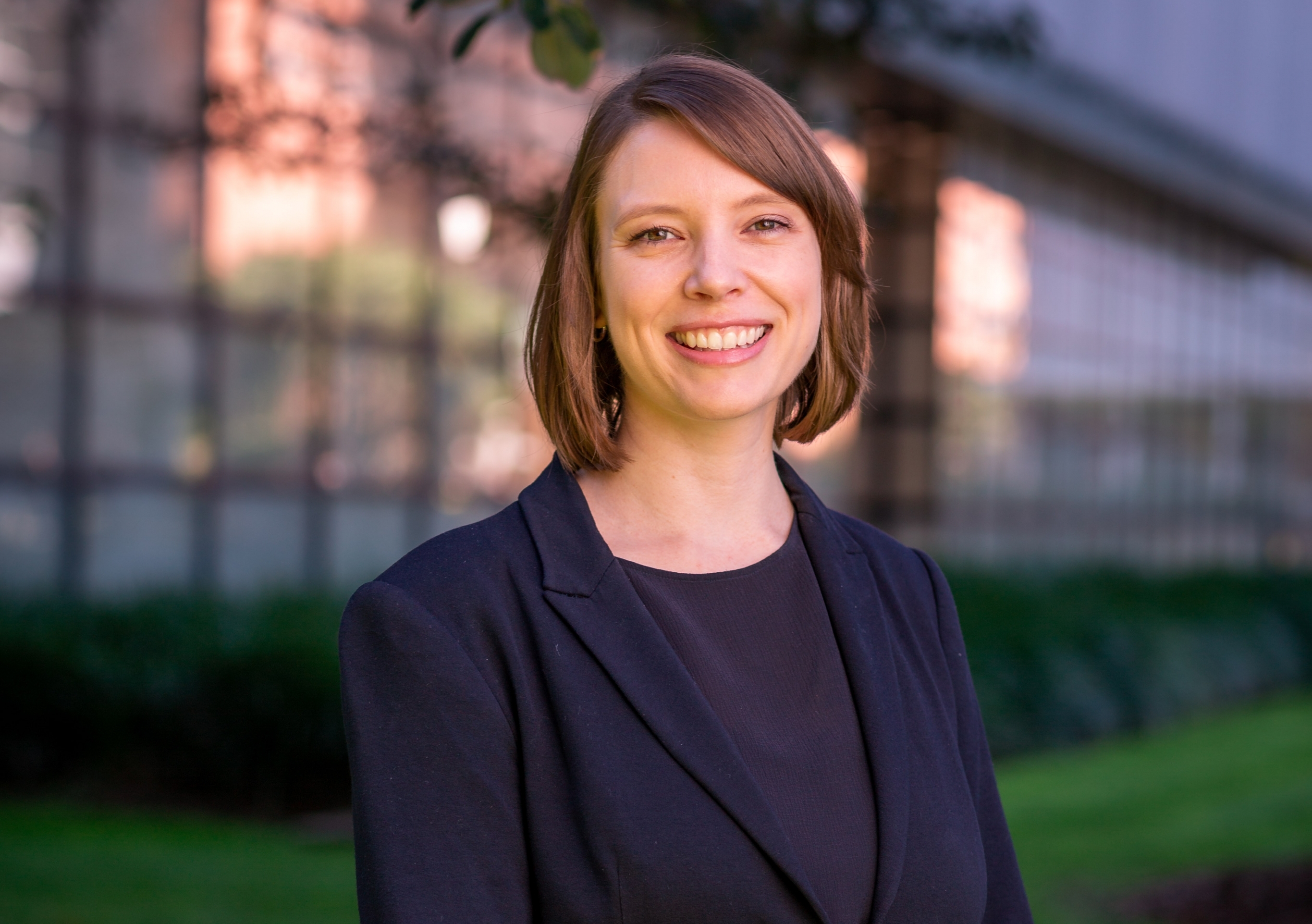
"That was my first exposure: with lumps of coloured Play-doh pressed into the four main lobes, the cerebellum, labelled with little cocktail flags – that you realise you could understand cognitive processes by understanding the brain…” Photo: Provided/UNSW Women in Maths & Science Champions Program.
Kathryn Baker is a researcher with the School of Psychology interested in the techniques from both psychology and neuroscience to understand how the brain matures in adolescence and influences emotions like fear.
Kathryn’s interest in science had its origins with an innate ‘curiosity in the mind’ but “it was in year 12,” she remembers, “while studying psychology (something our schools have in Victoria) that we had a female student teacher come into our class. She was engaging and just really excited to teach us about the brain. That was my first exposure: with lumps of coloured Play-doh pressed into the four main lobes, the cerebellum, labelled with little cocktail flags – that you realise you could understand cognitive processes by understanding the brain…”
It's far more complicated than that, she clarifies, but the principle stands. Earlier on Kathryn’s primary interest was memory, “the stored experience of all those day-to-day and memorable events in our lives that make us who we are”. While at Monash University studying memory storage – in chickens, no less (evidently their memory is ‘actually pretty good’) – Kathryn found inspiration in one of her PhD supervisors. “She was just wonderful; she supported me through the challenging periods of a PhD and knew how to harness my curiosity”.
Asked to recall any earlier influences, Kathryn describes her research at Monash on memory, and the path it led towards her postdoc at UNSW where she was mentored by excellent scientists, before recalling a present she received when she was little. “I must have been…10 years old? And for Christmas my parents got me a microscope. In my work now I use microscopes to examine brain cells, so yeah…that was a great gift.”
Palli Thordarson
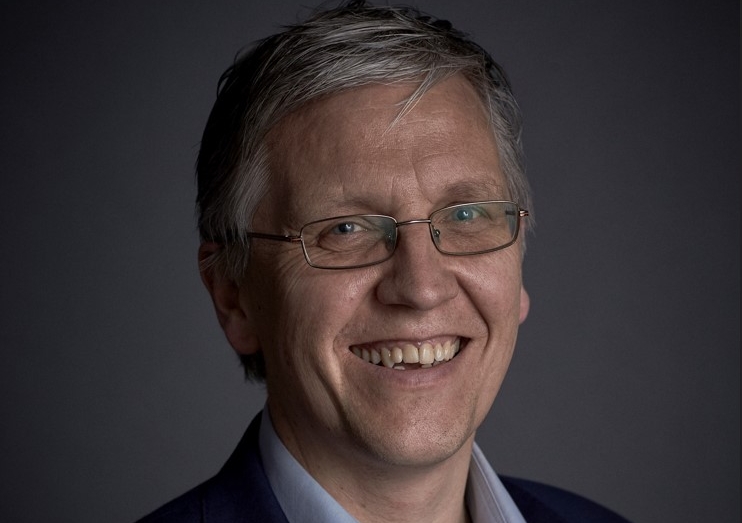
This translation, of non-life into life and back again, chemistry to biology – his research now with RNA – is a cycle of many steps. “Little things like that have an impact all the way down, right?” Photo: Richard Freeman.
Palli Thordarson is Director of the UNSW RNA Institute and a chemist whose research interests lie in “the synthesis of RNA and how it interacts with peptides and proteins”, where chemistry meets biology. It’s a relatively new appreciation of RNA where it influences “gene regulation, our own development, and even our neurology”.
Since childhood, Palli’s interest in science has been stoked by women in his life, on the family farm with his grandmother whose ‘strong love for nature, for plants and trees, taught him to appreciate the beauty of nature’, as well as at high school, with his chemistry teacher who taught basic chemistry. “She was a nutritional scientist by training, but it was the biochemistry courses I did with her that really got me fascinated.”
With early research on enzymes and a PhD on self-replicating molecules in Australia, Palli is a chemist who moonlights as a biochemist. It’s at this interface – where the inert becomes the living – that his interests have dwelt, beginning as a child when his grandmother, mother and father, introduced him to the cycle of life that begins with the soil, in the chemistry of the earth.
“It starts with putting a fertilizer and other chemicals on the field, like lime – say, and then you grow the grass, cut the hay, feed it to your sheep in the barns over winter (you have to keep them inside over winter [in Iceland where Palli grew up]), and then the lambs are born the next spring, and then selling them the following autumn, their life journey ends in the abattoir to become food for us. It’s a two-year cycle and it all starts with throwing the fertiliser on the grass.”
This translation, of non-life into life and back again, chemistry to biology – his research now with RNA – is a cycle of many steps. “Little things like that have an impact all the way down, right?” Palli says of choosing the fertiliser that will become the lamb. “My family taught me very early on to understand the cycle, the whole cycle – all the different steps. Because every single step matters.”
